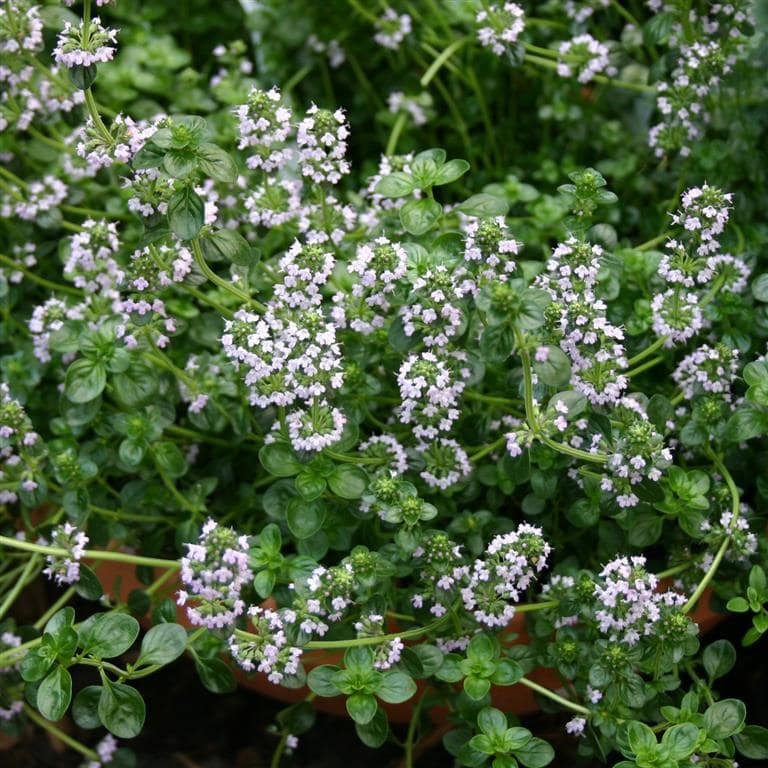Now when it comes to scented plants, thyme produces my favourite scent of any plant. Thyme has been around for many centuries and is another one of the herbs that is used both culinarily and medicinally. There are around 300 varieties, and many forms, including upright, compact and creeping. The leaves of thyme can vary from a grey green to a yellow and then all shades of green, from light to dark. Most thyme plants will flower, and the flowers are either white, pink or red.
Thyme needs to be planted in a sunny position and needs a good draining soil. They do not like a rich soil and will often fare better in stoney, dusty soils than most other plants. They are great for edges, paths and driveways.
Thyme is mentioned all through history; it was used by the Egyptians for embalming, and the Ancient Greeks used it in their baths and burned it as incense. The spread of thyme throughout Europe was down to the Romans, and they used it to purify rooms and to flavour cheese and liquors.
Culinary uses for thyme are endless. It goes so well with so many styles of cooking and it used extensively in Italian, French and Middle Eastern cooking. Thyme can be used fresh or dried, and works well in soups, roasted vegetables, pasta, sauces, pizzas and more! We love garnishing a recipe with a few sprigs of thyme: it looks lovely and adds a fresh, herbaceous flavour. It is also great in batter mixes for cupcakes and cookies and as a garnish for cocktails, or a Gin & Tonic! You can also mix it with mint leaves to blend a refreshing tea.
Medicinally, thyme is a heating diaphoretic, so it pushes the blood to the surface of the body and encourages sweating. It has antimicrobial and antiviral qualities which then helps with mucus build up. As an antispasmodic it eases coughs and is often paired with liquorice to help soothe the throat – much better than shop-bought remedies! Thyme also helps to eliminate uric acid from the body so is used to treat gout, arthritis, and rheumatism.
